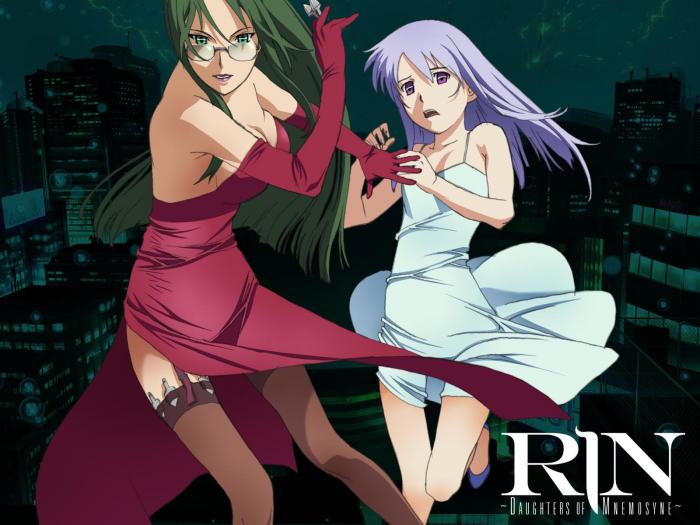Rin: Daughters of Mnemosyne Disjointed, Difficult to Follow Anime
FTC Statement: Reviewers are frequently provided by the publisher/production company with a copy of the material being reviewed.The opinions published are solely those of the respective reviewers and may not reflect the opinions of CriticalBlast.com or its management.
As an Amazon Associate, we earn from qualifying purchases. (This is a legal requirement, as apparently some sites advertise for Amazon for free. Yes, that's sarcasm.)

Anime shows have always played a huge role in Japanese culture. They are unique in terms of depiction of reality, through allegory, which is especially attractive for viewers.
The culture of anime has significantly grown during the past years. A lot of people from European countries are actively watching anime. Some may think that anime is only for children, but they can have a very deep meaning that is often incomprehensible even for adults.
Rin: Daughters of Mnemosyne is an anime that has gained in popularity, especially in Nordic countries. It is difficult to compare it with other anime in this particular genre, but Mnemosyne it has a rightful place and in this article, we will review it thoroughly.
What is the anime about?
Rin: Daughters of Mnemosyne tells the story of a beautiful, intelligent, and immortal girl, Rin Asogi, who diversifies and motivates her boring life by becoming a private detective, taking on a variety of cases, from catching lost cats to investigating strange and unexplained mysteries. To understand all the secrets of her strange existence and all its attendant problems is not easy, but it is very entertaining. The story touches on everything from blood and frankness, to people and zombies, to angels and demons, to assassins and their bosses.
Sex, immortality and the tree of life: that describes this anime. The combination, at first glance, is very strange, as is the show itself. The show frequently changes genre, purpose, and motivation. Only the environment remains untouched: immortal women – invisible to ordinary people -- whose bodies are seeds of time, and the tree, Yggdrasil, which throws them.
Yggdrasil
Yggdrasil the tree of life, a vital element in Nordic mythology. It might be a surprising fact to see it in Japanese anime, but the popularity of Yggdrasil is known all over the world. This tree is used in modern Scandinavian pop culture, where you can find amulets and necklaces featuring it. In the past decade, it has even become a pivotal part of the Scandinavian gambling industry, which is rapidly growing. If you follow this link, you’ll see that Norwegian online casinos are actively featuring Yggdrasil in their games and attracting customers.
Typical detective anime
The first series of Rin: Daughters of Mnemosyne represents a typical detective anime with a slight bias toward mysticism. But the further in, the mystical-fantasy components become more explicit. There are strange monsters and characters who clearly lack screen time; thus, the motives of Apos, the main antagonist, are very difficult to understand. He clearly wants to be at the head of the new world (this desire is actually so-so, and very jaded), but it is not clear how he intends to accomplish this. The last series not only doesn’t clarify anything, it further confuses the narrative, as the world is replaced by some perverted tropes, while new characters and locations pop up and immediately disappear.
It is pleasing that each vignette is set in different time periods, from 1990 to 2055, to a future where virtual reality has become an integral part of everyday life, as well as cyborgs, powerful artificial intelligence, strange clothing fashions, and digital murder.
The finale, badly knocked out of the otherwise even series of stories, significantly misses the mark. It’s as if the author grasped a good idea, and even threw in a few strong intriguing stories, but failed to connect them with each other, let alone come up with a logical ending that would answer all the questions. Instead, as we get closer to the final credits, the degree of misunderstanding starts to go off the scale!
The writer did not come up with a clear beginning, by the way, but there are not a lot of complaints about that. In the end, the ragged style of storytelling is actually the best fit for such a story.
The anime is based on a small novel, Mnemosyne no Musumetachi. I really wanted to compare the anime with the original source, but, unfortunately, it was impossible to find it.
Rin: Daughters of Mnemosyne promises an excellent experience, but fails on some occasions. Overall it is still a good idea to watch the anime at least once.

